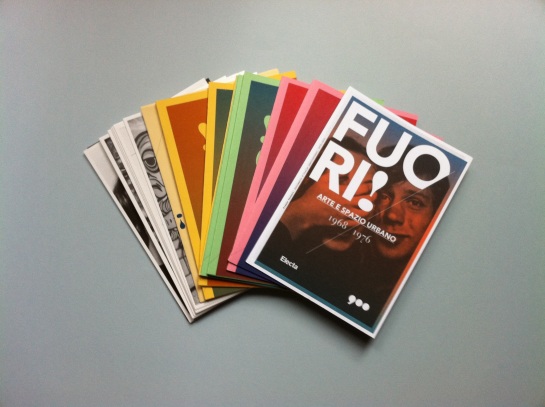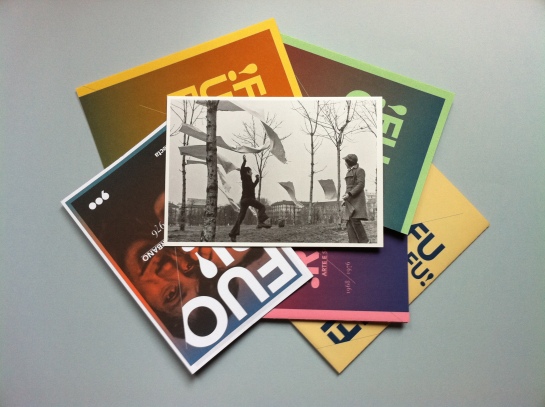When art faced the real world
Image taken from urbanfields.wodpress.com
The New York Times recently published a list of the 41 things not to be missed during 2011. Between them there was also the new Museo del Novecento, in the very heart of Milan. So, some weeks ago, when we where traveling there, we decided to visit the museum, giving a chance to the world-renowned newspaper.
During this visit, we had the chance to see a temporary exhibition, organized in a hall of the museum and dedicated to the relationship between art and urban environment In Italy from 1968 to 1976. The exhibition is called FUORI! (Outside).
As the curators explain in the nice catalogue, around 1968 artists started to act outside galleries and museums, to face the real world and involve more and more people in their performances, installations and sculptures. While analyzing this movement, they especially focused on four historic events and exhibitions; in between them, Arte Povera + azioni povere, organized in 1968 in the old dockyard and in the streets of Amalfi, Campo Urbano, that took place in Como in 1969; Festival del Nouveau Réalisme, which happened the city of Milan in 1970, and Volterra 73 in the homonymous little town in tuscany during 1973.
Even if these events where different between each other in the specific interventions they presented, they all had a common line based on ephemeral performances happening in the streets of the cities, a sort of first step towards that feeling of appropriation that characterized the following years and the early seventies. One of the main goal was to create a closer relationship between artists and citizens, as well as to encourage people to participate to the life of their cities, as it was demanded by the social and political atmosphere of that time.
All of these events had basically an ephemeral soul, and that is why the exhibition prefers to tell this story with historical videos, pictures and slides. Visiting the exhibition, it was interesting to notice how what we are nowadays investigating has old and distant roots, also in our own country’s history.



Awesome drawing information, really inspiring!